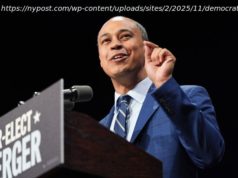Amazon’s $15 raise for warehouse workers may not actually be the slam dunk it originally seemed to be, as employees lose stock options and monthly bonuses.
Amazon’s recent company-wide $15 an hour minimum wage raise for its workers might not be the slam dunk many originally thought it to be.
RELATED: Hostility to Amazon now taking the form of graffiti in Seattle
The decision to increase wages for nearly 350,000 Amazon workers was widely lauded as a win for underpaid warehouse employees. The company is paying for the raise by eliminating monthly bonuses worth hundreds of dollars, as well as stock awards for warehouse workers and other hourly employees.
Before the raise, warehouse workers received anywhere from two to three Restricted Stock Unit (RSU) awards, vesting in full after two years. Sitting at around $2,000 a share, Amazon stock is traditionally touted as a massive value-add for employees when determining base wages.
On top of that, employees also received monthly bonuses through the company’s Variable Compensation Pay (VCP) program, with the ability to earn up to 8 percent of their monthly income. According to Yahoo! Finance, “an average worker usually receives $1,800 to $3,000 a year through the VCP program.” The potential earnings for bonuses double during peak months.
The recent raise, though, spelled the end to both RSU awards and the VCP program. Yahoo! Finance spoke with an anonymous employee, who estimated that while an additional $1 an hour raise adds up to $2,080 a year in total earnings, employees “could have earned a few thousands dollars more from the incentive programs.”
Essentially, the potential earnings ceiling has been lowered in favor of raising the floor, placing warehouse workers firmly between a rock and a hard place.
Amazon does note that the fixed raise represents a “more immediate and predictable” source of income for employees. Amazon representatives argue that overall compensation is actually going up, even with those cuts.
For a company whose revenue increased by 30 percent in 2017, and whose stock value has tripled since 2016, it could be perceived by some as dubious to claim that the only way to pay for a $15-an-hour raise is to take away other potential benefits.
Perhaps having it both ways simply isn’t possible, but it’s a tough pill to swallow for a cross-section of employees that have struggled just to get to this point.






